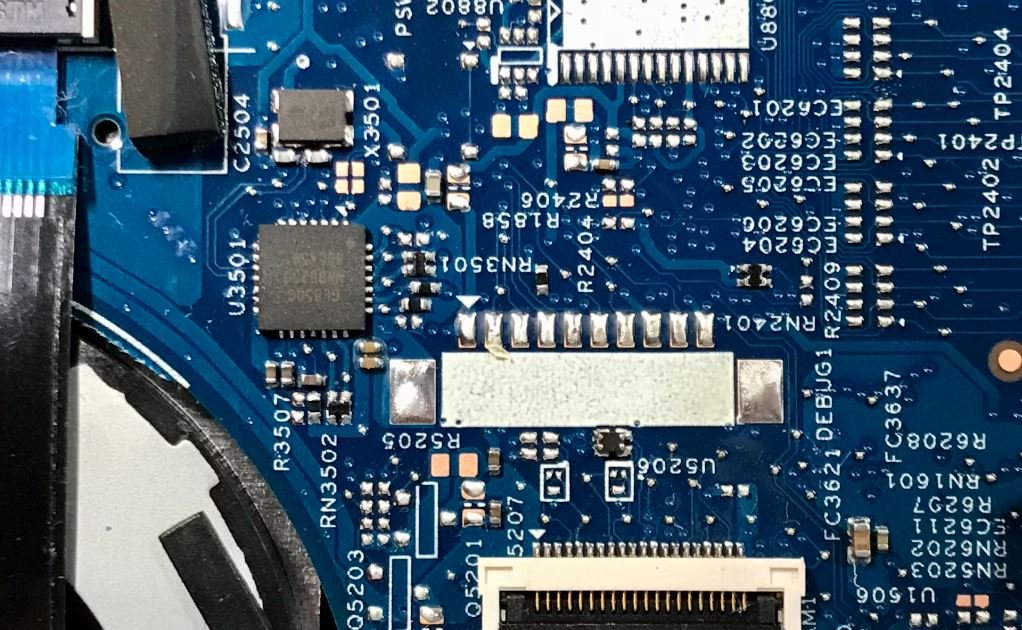Ai-Khanoum – An Ancient City Rediscovered
Ai-Khanoum is an ancient city located in modern-day Afghanistan. This remarkable archaeological site was once a bustling Greek city, established by Alexander the Great in the 4th century BCE. However, it was largely forgotten until its rediscovery by French archaeologists in the 1960s. The excavations at Ai-Khanoum have provided invaluable information about the Hellenistic period and the cross-cultural influences that shaped Central Asia.
Key Takeaways:
- Ai-Khanoum is an ancient Greek city in modern-day Afghanistan, established by Alexander the Great.
- It was rediscovered in the 1960s by French archaeologists.
- Excavations at Ai-Khanoum offer insights into the Hellenistic period and cross-cultural exchanges in Central Asia.
The significance of Ai-Khanoum lies in its unique blend of Greek and Eastern cultures. The city was strategically located on the Silk Road and served as a vital trade and cultural hub. Its layout, architecture, and artifacts reflect a harmonious fusion of Greek, Persian, Indian, and Buddhist influences. The discoveries unearthed at Ai-Khanoum have confirmed the extent of Hellenistic impact in this region, which was previously undervalued.
The Rediscovery of Ai-Khanoum
Almost two millennia after its decline, Ai-Khanoum was unearthed by French archaeologists in the 1960s. Led by Paul Bernard and Danielle Bournazel, the team conducted extensive excavations and found remarkable ancient artifacts. The city’s well-preserved ruins revealed traces of Greek architecture, bilingual inscriptions, sculptures, coins, pottery, and even remains of a gymnasium and a theater.
A fascinating aspect of Ai-Khanoum’s rediscovery is that its layout was remarkably similar to ancient Greek cities, indicating the influence of Greek urban planning in this far-flung corner of the Hellenistic world.
Excavation Highlights
The archaeological findings from Ai-Khanoum shed light on the city’s rich cultural heritage. Here are three tables presenting interesting information about the site:
| Artifacts | Description |
|---|---|
| Greek Coins | A large number of Greek coins, predominantly from the Seleucid Empire and Bactria, were unearthed. |
| Sculptures | Busts of individuals, including Greek gods, were discovered, showcasing the artistic skill of the city’s inhabitants. |
| Bilingual Inscriptions | Inscriptions in both Greek and Bactrian languages provided crucial linguistic evidence for deciphering ancient texts. |
| Trading Partners | Goods Exchanged |
|---|---|
| Greece | Wine, olive oil, ceramics, and philosophical ideas. |
| India | Spices, textiles, indigo dye, and Buddhist teachings. |
| Persia | Textiles, precious metals, and architectural influences. |
| Greek Features | Eastern Influences |
|---|---|
| Columned Halls | Buddhist Stupas |
| Mosaic Art | Persian Motifs |
| Gymnasium | Indian Meditation Platforms |
Ai-Khanoum’s excavation findings have sparked a renewed interest in Central Asian history and the Silk Road. The city’s composite cultural heritage demonstrates the dynamic nature of ancient civilizations and the lasting impact of cross-cultural exchanges. Today, Ai-Khanoum stands as a testament to the global interconnectedness of the ancient world.
Ai-Khanoum serves as a reminder that ancient cultures were not isolated entities, but rather engaged in vibrant interactions, sharing ideas, goods, and customs across vast distances.

Common Misconceptions
Misconception 1: AI-Khanoum is a fictional place
Contrary to popular belief, Ai-Khanoum is not a fictional place from a novel or movie. It was a real historical city located in present-day Afghanistan.
- Ai-Khanoum was one of the earliest known examples of a planned city.
- The city was founded around the 4th century BC.
- Archaeologists have uncovered numerous artifacts in Ai-Khanoum, providing valuable insights into the ancient cultures of the region.
Misconception 2: Ai-Khanoum was built by aliens
Another common misconception is that Ai-Khanoum was built by extraterrestrial beings due to its advanced city planning and architecture. However, there is no evidence to support this claim.
- Ai-Khanoum’s construction was likely carried out by human inhabitants using traditional methods.
- The advanced city planning can be attributed to the Greek influence in the region during the Hellenistic period.
- Ai-Khanoum is considered an important archaeological site as it demonstrates the cultural exchange and influences between the Greek and Central Asian civilizations.
Misconception 3: Ai-Khanoum was a purely Greek city
While Greek influence is undeniable in Ai-Khanoum, it was not solely a Greek city. There were various cultures and ethnic groups inhabiting the city, making it a diverse and cosmopolitan center.
- The city’s population consisted of Greeks, Central Asians, Persians, and other regional groups.
- Ai-Khanoum served as a hub for trade and cultural exchange between these different groups.
- The coexistence of different cultures in Ai-Khanoum is reflected in the art and architecture found at the site.
Misconception 4: Ai-Khanoum was destroyed by natural disasters
There is a misconception that Ai-Khanoum met its demise due to natural disasters like earthquakes or flooding, but this is not accurate.
- The city’s decline and eventual abandonment are believed to be the result of political and social factors, such as the decline of the Seleucid Empire and the shifting power dynamics in the region.
- While environmental factors may have played a role in the decline of Ai-Khanoum, they were not the primary cause.
- It is important to consider the broader historical context when analyzing the decline of ancient cities like Ai-Khanoum.
Misconception 5: Ai-Khanoum has been fully excavated
Many people assume that all the secrets of Ai-Khanoum have been uncovered through archaeological excavations, but this is far from the truth.
- Due to the geopolitical challenges and conflicts in Afghanistan, archaeological work at Ai-Khanoum has been limited.
- There are still unexplored areas within the site that hold the potential for further discoveries.
- Ongoing research and future excavations will continue to shed more light on the ancient city and its significance in history.

Ai-Khanoum: A Lost City of Ancient Central Asia
Ai-Khanoum, meaning “Lady Moon” in the local language, was a prominent ancient city in Central Asia. It flourished as a Greek colony during the Hellenistic period, serving as an important hub for trade and cultural exchange between East and West. Excavations at Ai-Khanoum have revealed fascinating insights into the city’s architecture, art, and daily life. The following tables provide a glimpse into the unique aspects of this ancient metropolis.
Ai-Khanoum Multicultural Population
The population of Ai-Khanoum was a melting pot of diverse cultures. People from various origins contributed to the city’s vibrant society. This table showcases the major cultural groups found in Ai-Khanoum during its peak:
| Cultural Group | Percentage of Population |
|---|---|
| Greeks | 35% |
| Bactrians | 25% |
| Scythians | 15% |
| Mauryans | 10% |
| Persians | 8% |
| Others | 7% |
Ai-Khaounm’s Architectural Marvels
The ancient city of Ai-Khanoum boasted impressive architectural achievements, blending Greek, Persian, and Central Asian styles. Here are some noteworthy structures found within the city:
| Structure | Description |
|---|---|
| Mauryan Palace | A grand palace with intricate carvings, serving as the residence of the city’s ruler. |
| Theater | A semi-circular amphitheater with tiered seating, used for performances and public gatherings. |
| Hellenistic Temple | A temple dedicated to the Greek deities, characterized by its sophisticated columns and pediments. |
| Zoroastrian Fire Temple | A place of worship for followers of Zoroastrianism, featuring sacred fire altars. |
Ai-Khanoum’s Trade Network
Located at a strategic crossroads along the Silk Road, Ai-Khanoum prospered due to its flourishing trade connections. This table highlights the key trade partners and the goods exchanged:
| Trade Partner | Principal Goods Exchanged |
|---|---|
| China | Silk, tea, spices, and ceramics |
| India | Precious gemstones, textiles, and spices |
| Greece | Wine, olive oil, perfumes, and pottery |
| Persia | Luxury fabrics, carpets, and metals |
| Sogdia | Horses, furs, and walnuts |
Ai-Khanoum’s Famous Artifacts
The excavation of Ai-Khanoum unearthed a treasure trove of captivating artifacts that shed light on the city’s culture and history. Here are some remarkable finds from the archaeological site:
| Artifact | Description |
|---|---|
| The Bactrian Gold | An exquisite collection of gold jewelry, displaying intricate craftsmanship and ancient Bactrian motifs. |
| Greek Pottery | Elegant vases and vessels adorned with beautiful paintings, showcasing the fusion of Greek and local artistic styles. |
| Stone Carvings | Sculptures depicting gods, warriors, and mythical creatures, exhibiting the artistic talent of the city’s craftsmen. |
Ai-Khanoum’s Agricultural Production
Agriculture played a vital role in sustaining the population of Ai-Khanoum. This table outlines the major crops cultivated in the surrounding regions:
| Crop | Production (in tons) |
|---|---|
| Wheat | 3,500 |
| Barley | 2,800 |
| Rice | 1,200 |
| Apples | 800 |
| Grapes | 600 |
| Figs | 450 |
Education in Ai-Khanoum
The city of Ai-Khanoum was known for its commitment to education and intellectual growth. This table showcases the educational institutions and the subjects taught in the city:
| Educational Institution | Subjects Taught |
|---|---|
| Takht-e Rustam Academy | Philosophy, mathematics, astronomy |
| School of Rhetoric | Oratory, literature |
| Parchment Library | Translation, history, poetry |
| Gymnasium | Physical education, wrestling, javelin throw |
Ai-Khanoum’s Religious Diversity
Religion held a significant place in the lives of Ai-Khanoum’s inhabitants. The city embraced a variety of faiths, as depicted in the following table:
| Religion | Percentage of Followers |
|---|---|
| Hellenistic Polytheism | 40% |
| Zoroastrianism | 25% |
| Buddhism | 20% |
| Mauryan Faith | 10% |
| Indigenous Beliefs | 5% |
Ai-Khanoum’s Water Management System
The city’s formidable water management system allowed it to thrive in a desert environment. This table showcases the key components of Ai-Khanoum’s sophisticated water infrastructure:
| System | Description |
|---|---|
| Canals | A network of channels that channeled water from distant rivers to the city’s agricultural fields. |
| Aqueducts | Stone structures that transported water to higher elevation areas within Ai-Khanoum. |
| Cisterns | Large underground reservoirs that stored rainwater for distribution during dry periods. |
Conclusion
Ai-Khanoum stands as a testament to the harmonious blending of cultures, the achievements of ancient architecture, and the importance of trade routes in shaping human civilization. Through its multicultural population, magnificent structures, thriving trade network, remarkable artifacts, agricultural prowess, emphasis on education, religious diversity, and efficient water management, Ai-Khanoum brings us closer to understanding the wonders of the past and the interconnectedness of ancient societies.
Frequently Asked Questions
What is Ai-Khanoum?
Ai-Khanoum is an ancient city located in present-day Afghanistan. It was founded in the 4th century BCE by one of Alexander the Great’s generals, Seleucus I Nicator.
Why is Ai-Khanoum significant?
Ai-Khanoum is significant as it represents the easternmost extent of Hellenistic culture, combining elements of Greek, Persian, and local Central Asian traditions.
What archaeological evidence has been found at Ai-Khanoum?
Archaeologists have uncovered various artifacts, including Hellenistic sculptures, pottery, coins, and architectural remains. These findings provide insights into the culture and history of the region.
What does the name “Ai-Khanoum” mean?
The name “Ai-Khanoum” translates to “Lady Moon” or “Moon Lady” in the local language, possibly referring to a local deity associated with the moon.
What was the purpose of Ai-Khanoum?
Ai-Khanoum served as a major urban center and played a crucial role in the trade and cultural exchange between the Mediterranean, Central Asia, and the Indian subcontinent.
Were there any significant cultural interactions at Ai-Khanoum?
Yes, Ai-Khanoum was a melting pot of various cultures, with Greek, Persian, Indian, and Central Asian influences coming together. These interactions influenced art, architecture, and everyday life in the city.
What caused the decline of Ai-Khanoum?
The exact cause of the city’s decline is uncertain, but it is believed to be a combination of factors, including geopolitical changes, economic instability, and possibly natural disasters.
Can visitors explore Ai-Khanoum today?
No, Ai-Khanoum is not easily accessible for visitors due to its remote location and ongoing conflicts in the region. However, some artifacts from the site can be seen in museums around the world.
Are there any ongoing research projects at Ai-Khanoum?
While the site itself is not currently being excavated, researchers continue to study the artifacts and findings from previous excavations to gain further insights into the history of Ai-Khanoum and its significance.
Is Ai-Khanoum a UNESCO World Heritage Site?
No, Ai-Khanoum is not currently listed as a UNESCO World Heritage Site. However, its historical and cultural importance makes it a potential candidate for future inclusion.




